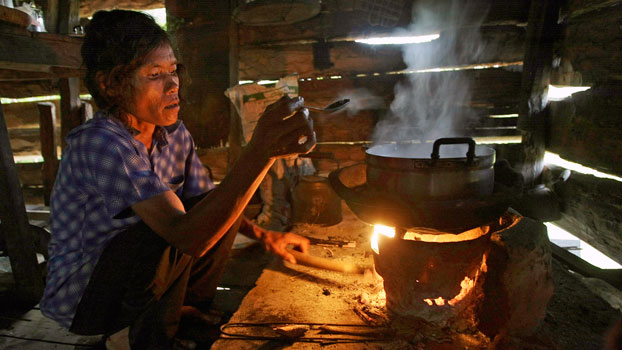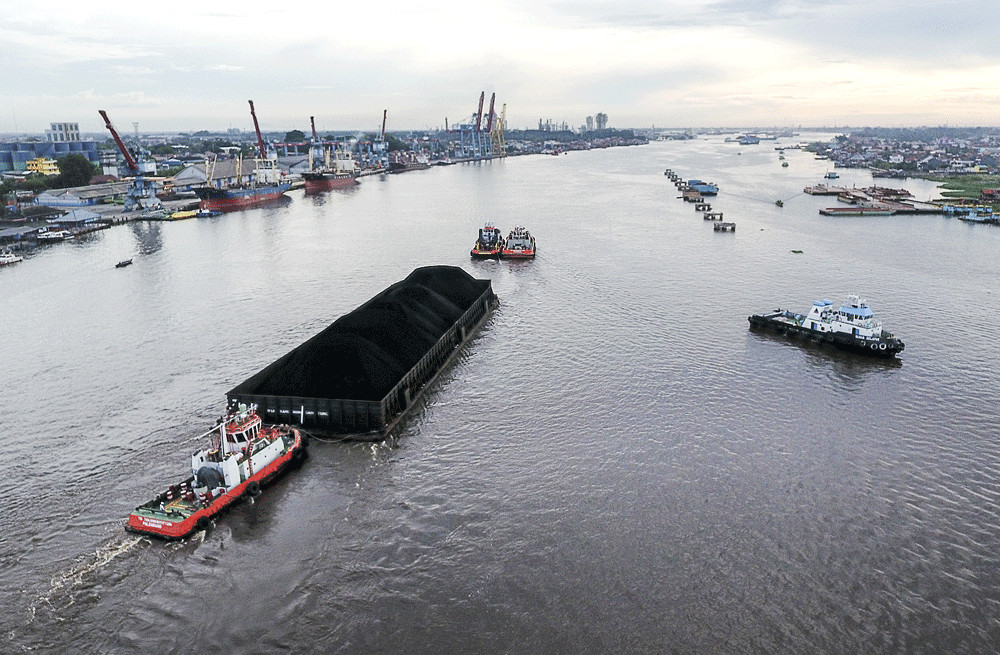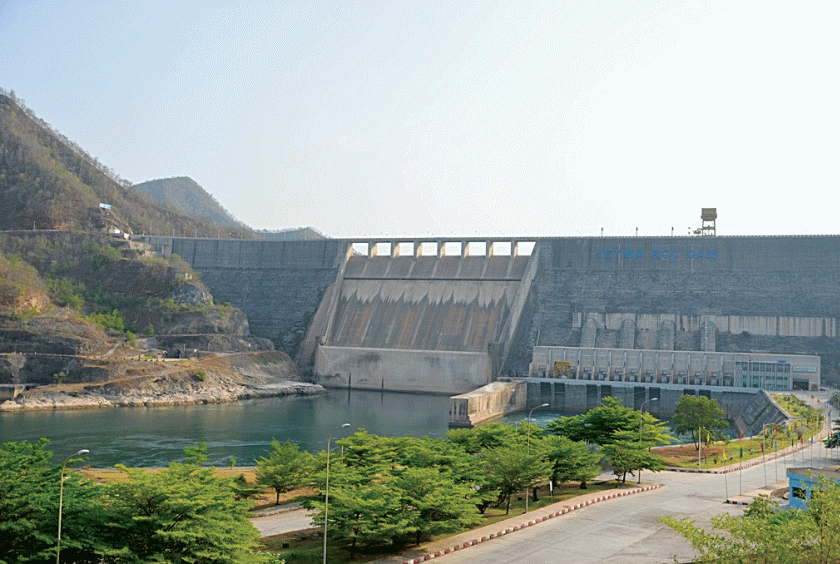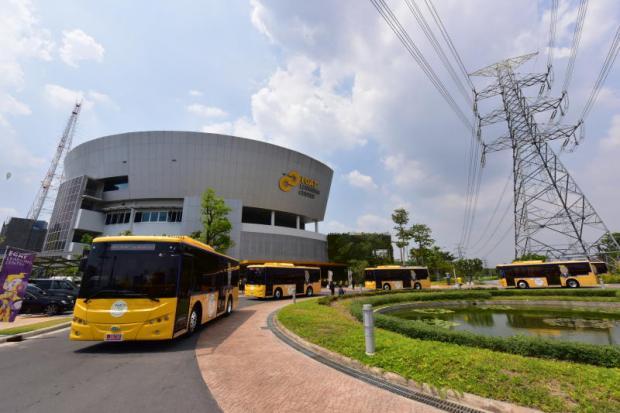When the lights literally went out in many parts of Cambodia in February and stayed off in some areas during the following months, people immediately pointed their fingers at Prime Minister Hun Sen.
They accused the mercurial autocrat who has ruled the country for more than three decades of orchestrating the blackouts in middle- and low-income areas to boost public support for proceeding with the controversial Stung Cheay Areng Dam in Koh Kong province, despite environmental concerns that shelved the hydropower project in 2015.
On Feb. 19, Cambodia granted China’s Sino Resources Ltd., a holding company for China’s Sinohydro Group permission to conduct six months of extensive drilling, geological mapping, and prospecting in the concession for the proposed 108-megawatt hydropower project.
The government, which is dependent on energy imports from its neighbors to keep Cambodian households and apparel factories running, attributed the outages to high temperatures, a water shortage affecting the ability of existing dams to generate power, and high levels of electricity consumption by the public.
To make matters worse, Hun Sen ordered officials in early April to cut off electricity to the homes of those who had blamed the government, while he kept the electricity flowing to his mansion, the homes of his relatives and high-ranking officials, the royal palace, hotels, casinos, and Chinese-financed businesses and premises.
Three days later, his Council of Ministers approved a 39-year build-own-operate-transfer (BOOT) concession for the construction of the Chinese-backed Stung Pursat 1 Dam at a cost of U.S. $231 million.
To avoid criticism, the government concurrently approved two 60-megawatt solar energy plants — one in Pursat province and the other in Kampong Chhnang province — along with a 20-megawatt increase to an existing 60-megwatt solar energy plant in Kampong Speu province.
In the meantime, the electricity cuts are expected to last through May, with the national grid about 400 megawatts short of what is needed to power the country during the dry season.
Such scenarios are one reason why Cambodia should consider adding more renewable energy sources to its power mix, say analysts at think tanks and environmental NGOs, who also warn that building more hydropower dams is not the answer to electricity blackouts.
“There just isn’t enough power in Cambodia’s rivers during the dry season to use dams to keep the lights on,” said Brian Eyler, director of the Southeast Asia program and an expert on transboundary issues in the Mekong region at the Washington-based Stimson Center.
Power is in great demand in April and May during the height of the dry season, when Cambodia’s main engines of power — its coastal dams and the Lower Sesan 2 Dam located near the confluence of the critically important Sesan and Srepok rivers in Stung Treng province — run at extremely low efficiency rates, he said.
“Clearly, more hydropower is not the answer to alleviate dry season electricity demand, especially since climate change impacts are predicted to prolong the length of dry seasons in the coming decade,” Eyler said.
“The kingdom’s policymakers would be wise to expand scale solar capabilities as well as other renewable energy sources such as biomass and wind,” he said. “This would deliver a low-cost, climate-forward power system and put an end to these perennial blackouts.”
Cambodia well-positioned for solar
Cambodia currently has about 10,000 megawatts of hydropower potential, but also an estimated 8,100 megawatts of solar potential, and around 6,500 megawatts of wind power, according to energy researchers, think tanks, and the Asian Development Bank (ADB).
An offshore natural gas option is commercially viable, but not likely to be developed on account of a border dispute with neighboring Thailand, experts said.
Of all the countries in Southeast Asia, Cambodia may be the best positioned for solar-power generation with potential opportunities to rezone many massive economic land concessions (ELC) lying fallow from commodity projects that failed to materialize, Courtney Weatherby, a research analyst with the Stimson Center, said in February.
Because the land parcels are in areas with strong solar radiation for potentially profitable solar projects, “it’s worth it for the government to consider working with ECL landowners and rezone some of these for solar farms and open them up to auction and assist with the country’s energy supply,” she said.
Cambodia is unique among other Southeast Asian countries in that it has a National Council for Sustainable Development, a special interagency panel under the Ministry of Environment that brings together stakeholders and progressive decision makers from other ministries to discuss stable development issues, such as the country’s energy plans.
“No other country in the Mekong region has this,” Eyler said, adding that Say Samal, the country’s 38-year-old minister of the environment, and other council members have shown an eagerness to ramp up solar power and other renewable energy resources but still must win the support of their superiors.
Experts also say the time is ripe for making the move to sun power because the cost of solar has fallen while investor interest is rising, experts said.
In the past, the cost of solar technology was unaffordable for most developing countries, but prices have dropped dramatically on a global scale, particularly in the last five years because of overcapacity in China, shifts in innovation, and new financing and construction models, Weatherby said.
Cambodia has already had some early successes with rolling out a few solar projects. In 2017, a Cambodian-Thai-Lao joint venture began building a 15-megawatt solar plant in Kampong Speu province to provide power to a local industrial zone, the first of the company’s several planned solar projects in the region.
The Bavet Solar Farm, Cambodia’s first large-scale commercial solar power plant, was built in Svay Rieng province near the Vietnamese border and became operational in 2017, producing 10 megawatts of electricity which was sold to the grid.
Building on the success of the Bavet pilot project, the ADB, which financed the solar farm, is now moving ahead with the implementation of a plan to build a 100-megawatt National Solar Park in central Cambodia’s Kampong Chhnang province.
Despite its advantages, solar power must still overcome the downsides of the intermittency and seasonality of solar as well as limited storage capabilities, though the latter is quickly changing with technological advancements, Eyler said.
Cambodia’s Lower Sesan 2 hydroelectric dam is seen during its inauguration in northeastern Cambodia’s Stung Treng province, Dec. 17, 2018.Credit: AFP
Expensive electricity
The people of Cambodia, which rely on energy imports from the country’s neighbors, pay some of the highest electricity rates in all of the 10-member Association of Southeast Asian Nations (ASEAN) — as high as 25 U.S. cents per kilowatt hour in Phnom Penh and 80 cents in rural areas where people rely on imported diesel to power refrigerators and light bulbs, Weatherby said.
By contrast, residents of neighboring countries receive electricity subsidies and on average pay five to eight cents per kilowatt hour, she said.
Cambodia’s demand for electricity has been growing at an annual 10-20 percent clip, despite its current 2,400-plus megawatt capacity, versus nearly 4,000 megawatts in Thailand and more than 30,000 megawatts in Vietnam, Weatherby said.
Government estimates indicate that Cambodia’s annual electricity demand growth will average 9.4 percent through 2020, while a 2018 report by the International Renewable Energy Agency predicts a much higher figure of 150 percent-200 percent cumulative growth through 2025.
Alejandro Gonzalez-Davidson, founder of Cambodia-based environmental watchdog Mother Nature, believes that the Cambodia government’s recent short-term solutions to the current blackouts — including rotational power cutoffs around the country and requests for additional power purchases from neighboring nations — indicate a “serious failure” by officials to set and implement a correct vision for Cambodia’s energy security toward independent power-development strategies.
“No one can deny this problem,” he told RFA’s Khmer Service. “Even schoolchildren know that the government has failed to provide public necessities, especially electricity demands. It’s a 100-percent failure.”
Gonzalez-Davidson said he prefers a solar-based solution to Cambodia’s energy crisis.
“It is far cheaper than hydropower dams, produces the least amount of environmental impact without having to evict residents, and can be constructed near Phnom Penh instead of far away in the middle of the forest where [construction] may cause deforestation,” he said.
Yang Saing Koma, a Cambodian agriculture expert turned politician, noted that the current power shortage occurred around the same time as the government had inaugurated the Lower Sesan 2 Dam — the country’s largest hydropower project ever built — with high expectations that it would generate up to 400 megawatts of power.
He said he was “quite surprised” that this year’s blackout began in February instead of in April or May as it usually does.
“This year, as early as February, our hydropower dams appeared to have run out of water, especially in relation to the Lower Sesan 2 Dam that the government originally expected to generate up to 400 megawatts of power to offset the power shortage,” he said.
“Eventually this dam’s power supply will not meet the government’s expectation,” said Yang Saing Koma, the founder of the Cambodian Center for the Study and Development of Agriculture and cofounder of the Grassroots Democracy Party.
Though some experts say that hydropower should continue to be a part of Cambodia’s energy mix, they contend that it should not be employed to the detriment of the Lower Mekong mainstream and the country’s Lake Tonle Sap, the country’s seasonally inundated freshwater lake with a river that connects to the Mekong mainstream.
Hydropower and coal
Cambodia’s most recent Master Energy Plan of 2016 focuses heavily on hydropower and coal power generation, but excludes non-hydropower renewable energy sources, primarily because the country had no commercial-scale solar or wind power until 2017, the Stimson Center said in a report issued in February.
Yang Saing Koma also pointed to the government’s 2030 electricity development policy for rural areas, which focuses on hydropower, coal, and electricity imports from adjacent countries.
“This policy is not widely open nor does it promote solar energy sources,” he said.
“This is a drawback that the government should correct to resolve the electricity shortage, which I believe will become more aggravated in the coming years due to rising and high demand,” he added.
Since the issuance of the last Master Energy Plan, Cambodia has dropped some hydropower projects and adjusted the energy mix to take advantage of now more affordable solar technologies, while planners at the Ministry of Mines and Energy are updating the plan on an annual basis, the Stimson Center’s report said.
Nevertheless, hydropower will continue to play a significant role in the Southeast Asian country.
Cambodia has seven operational dams mostly located along the coast, but plans to build 13 more that can together generate up to 1,300 megawatts supplemented by another 1,420 megawatts of electricity generated from coal, according to Electricité du Cambodge’s (EDC) 2016 annual report, the company’s most current report available online.
The country has more than 40 memorandums of understanding or feasibility studies for tributary dams in Cambodia’s portion of the Mekong, according to the Stimson Center.
It has yet to approve the construction of the China-backed 2,600-megawatt Sambor Dam on the Mekong River in Kratie province, which would be the country’s largest hydropower project with an 18-kilometer (11-mile) barrier across the waterway and an 82 kilometer-long (51 mile-long) reservoir behind it.
A government-commissioned report by the National Heritage Institute, a U.S.-based research and consultancy firm, that was leaked nearly a year ago found that the massive dam would “literally kill the Mekong,” dealing a devastating blow to fisheries by blocking fish migration from the vital Tonle Sap and spawning grounds upstream.
Cambodia’s proposed dams form part of a constellation of 11 large hydropower dams on the Mekong’s lower mainstream and 120 tributary dams planned by 2040 that will endanger the region’s ecology, economy, and food security, according to a February 2018 report by the Mekong River Commission, an intergovernmental organization that works directly with the governments of Cambodia, Laos, Thailand, and Vietnam to jointly manage shared water resources.
“Hydropower should be part of any power mix moving forward in the Mekong, but it shouldn’t be done at the expense of ruining fisheries within Cambodia or putting the country at the risk of a food security crisis,” Eyler said in February.
Cambodians dry fish in a village along the Tonle Sap River in Cambodia’s capital Phnom Penh, January 16, 2019.Credit: AFP
Fisheries under threat
Cambodia’s focus on building additional hydropower dams to support its economic growth instead of on water governance and ecology could backfire, said Hem Ouddom, an independent consultant specializing in energy, environment, and water governance issues.
“Once we do anything that may affect or pose a change to our ecology, our river will be affected, and eventually it will equally affect our national economic interest,” he said.
The Ministry of Agriculture’s Research and Development Institute found that if the Sambor Dam comes online, the country will lose 16 percent-31 percent of its fishery resources, and with it, the protein from fish that is vital to Cambodians’ diets.
The half-million tons of fish caught annually in the Tonle Sap alone contribute about 75 percent of Cambodians’ protein intake, the Stimson Center’s report said.
The continued building of dams will have other negative impacts, experts said.
“When we comprehensively analyze [the] impacts on our culture, traditions, society, migration, and loss of fishing livelihoods and biodiversity, it is difficult to calculate the monetary value,” Hem Ouddom said.
“When the government thinks only about economic value, somehow some developers forget to consider ecological costs,” he said.
Commitments to build more hydropower dams will bind Cambodia to long-term contractual obligations that could last for decades, he added, and suggested that the government put in place a decentralized electrification policy that focuses on non-hydropower renewable energy, and in particular solar power.
“This means that we should establish a policy of incentives for communities or households to generate their own power,” Hem Ouddom said.
“For example, by installing solar panels on the roofs of their houses, households can use this power without having to get connected to the national grid network,” he said.
Cambodia is already in a favorable position of being able to expand upon the success of two solar pilot projects, experts said.
In 2017, a consortium led by a Singapore developer with financial backing from the ADB built Cambodia’s first large-scale photovoltaic power plant, the 10-megawatt Bavet Solar Farm in Svay Rieng province near the border with Vietnam.
The ADB and EDC are now moving forward on the implementation of a 100-megawatt National Solar Park that builds on the Bavet Solar Farm and would improve the country’s limited power supply, bring technical benefits to the national grid, and diversify the generation mix with more clean energy.
The park will connect to EDC’s network in Kampong Speu and Kampong Chhnang provinces through a transmission system to a grid substation.
And in January 2018, Cambodia issued regulations to clarify the conditions for installing and operating solar systems in Cambodia, both large-scale and rooftop.
“As far as the [energy] mix goes, here’s a chance to turn Cambodia into the solar belt of Southeast Asia, so we look forward to more development moving forward,” Eyler said.












